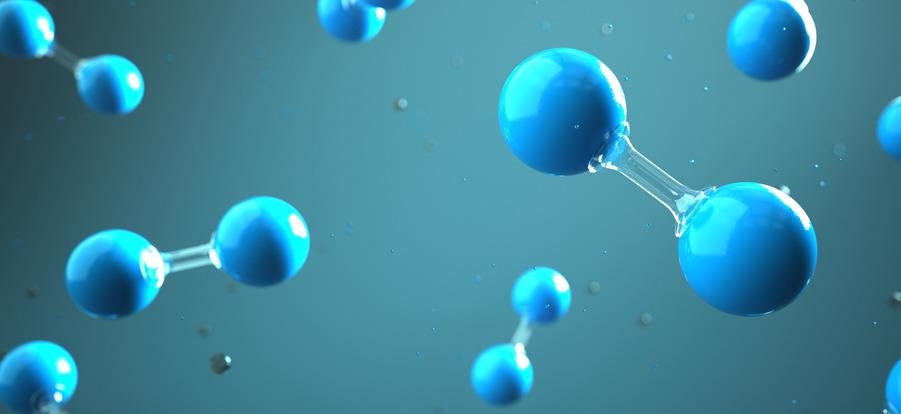Today, developing new strategies and policies for energy production and storage is a matter of urgency given current global targets to cut greenhouse gas emissions by at least 55% by 2030. Developing sustainable hydrogen and carbon capture technologies in the near future could help expedite the transition towards cleaner sources of energy, as considered in the journal Energies.

Macroeconomic Factors Influencing Public Policy Strategies for Blue and Green Hydrogen.Image Credit: Alexander Limbach/Shutterstock.com
Researchers based at the University of Ferrara, Italy have been analyzing the major policy factors influencing the transition to hydrogen and carbon capture and storage technologies by taking into account a range of other factors such as fossil fuel consumption and the Debt/GDP ratio.
“Policy plays a key role in the promotion of different paths of energy sources exploitation, and much research has been conducted to assess its effects on renewable energy innovation”, explains co-author Professor Roberto Fazioli at the Department of Economics and Management, University of Ferrara, Italy.
Published in the journal Energies, the study details the relationship between applied hydrogen strategies and carbon capture storage (CCS).
In order to contribute to such a debate, our work has been set on the analysis of public policy factors that can play a significant role in the orientation of policies towards the affirmation of hydrogen economies
Francesca Pantaleone MSc, co-author and researcher at Department of Economics and Management, University of Ferrara, Italy
Hydrogen Production and Carbon Capture
Hydrogen can be produced using a range of techniques and comes in many colors – black, brown, grey, pink, blue, and green. However, only blue and green production methods are considered to be low-carbon and clean energy solutions respectively due to the fact emissions are not dispersed into the atmosphere and/or produced using low carbon and renewable resources.
With appropriate carbon capture and storage (CCS) hydrogen can be produced with near-zero, or net-zero greenhouse gas emissions. Thus, hydrogen production with CCS could be a key transition technology for moving in the direction of a sustainable hydrogen-using society.
As it stands, clean hydrogen isn’t scaling fast enough to deliver on its potential, in part due to challenges like COVID-19 and reduced fossil fuel and CO2 prices. Moreover, making this transition to blue and green hydrogen and CCS is, as Fazioli and Pantaleone state, shaped by certain factors with national public debt among the most significant.
The World Economic Forum has launched the Accelerating Clean Hydrogen Initiative, as part of its Climate Action Platform, Shaping the Future of Energy, Materials and Infrastructure, to find ways to accelerate and implement policies to help bring about its widespread adoption.
Policy Factors
Fazioli and Pantaleone found that among the major factors influencing national hydrogen policy was the amount of national public debt as countries with no substantial public budget constraints were more likely to implement policy and investments in the development of the hydrogen industrial chain.
New Single-Atom Dimer Electrocatalyst for Green Hydrogen Production
Furthermore, countries with higher national oil reserves were less likely to prioritize or roll out blue/green hydrogen and CCS policies, however, confirming their working hypothesis that high fossil fuel consumption investing in blue hydrogen and CCS towards a zero-carbon-emission:
“An increase in fossil fuel consumption slightly raises the probability outcome of a Hydrogen or CCS policy. On the contrary, it seems that increasing oil reserves slightly decrease the probability outcome of a hydrogen policy,” explains Pantaleone.
One of the more general findings was that out of blue and greens strategies, blue was most likely to be adopted because it is cheaper with the EU focusing on the policy development and adoption of blue hydrogen solutions. However, some argue that blue hydrogen strategies can produce significant amounts of greenhouse gases as up to 20% of the carbon generated cannot be captured.
Stimulating the Energy Transition
The policies needed to stimulate the hydrogen industry and carbon capture and storage solutions are linked to the priority security needs of energy supplies in economically sound countries, and where such levels of security – which becomes “energy autonomy” – become a key feature for the policymaker.
In order to encourage wider acceptance and investment in blue/green hydrogen and carbon capture technologies, Fazioli and Pantaleone believe that more research should be done focusing on the assessment of actual and prospective cost-effective reductions. Additionally, the pair say that investigations into particular pricing for blue and green strategies, as well as the effective carbon reduction of the technologies, should be conducted.
According to the International Energy Agency (IEA), international cooperation is vital to accelerate the growth of versatile, clean hydrogen around the world. Whether this be by shaping new national policies or investing in advanced technologies, in order to tackle the ongoing climate crisis stimulating the energy transition remains center stage.
References and Further Reading:
Fazioli, R.; Pantaleone, F. Macroeconomic Factors Influencing Public Policy Strategies for Blue and Green Hydrogen. Energies 2021, 14, 7938. https://www.mdpi.com/1996-1073/14/23/7938
‘2030 Climate Target Plan’ European Commission [https://ec.europa.eu/clima/eu-action/european-green-deal/2030-climate-target-plan_en accessed November 2021]
‘Accelerating Clean Hydrogen Initiative’ World Economic Forum [https://www.weforum.org/projects/accelerating-clean-hydrogen accessed November 2021]
‘The Future of Hydrogen’ International Energy Agency [https://www.iea.org/reports/the-future-of-hydrogen]
Disclaimer: The views expressed here are those of the author expressed in their private capacity and do not necessarily represent the views of AZoM.com Limited T/A AZoNetwork the owner and operator of this website. This disclaimer forms part of the Terms and conditions of use of this website.